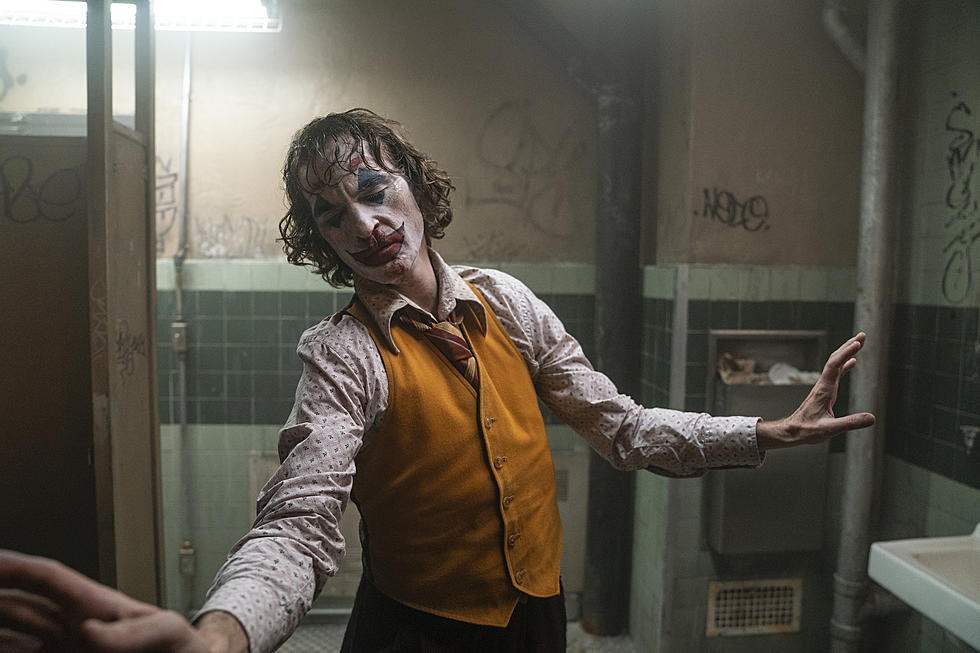
The Evolution of Batman: The Best Batman Stories by Decade
Many of comics’ most popular heroes have been around for decades, and in the case of the big names from the publisher now known as DC Comics, some have been around for a sizable chunk of a century. As these characters passed through the different historical eras known in comics as the Golden Age (the late 1930s through the early 1950s), the Silver Age (the mid 1950s through the late 1960s), the Bronze Age (the early 1970s through the mid 1980s) and on into modern times, they have experienced considerable changes in tone and portrayal that reflect the zeitgeist of the time.
With this new feature we’ll help you navigate the very best stories of DC Comics’ most beloved characters decade by decade. This week, we’re taking a look at Batman.
1930s-1940s: “The Origin of Batman”
Batman vol 1 #47, by Bill Finger, Bob Kane and Lew Sayre Schwartz
The earliest Batman stories pulled influence from such sources as pulp characters, like the Shadow and Doc Savage; film characters, like Zorro; and comic strip characters, like Dick Tracy and the Phantom. As such, these early tales, primarily by writer and co-creator Bill Finger and artists Dick Sprang and Jerry Robinson (all credited to “co-creator” Bob Kane, of course), featured elements appropriate to these influences: hard-bitten violence, leering gangsters, supernatural monsters, mad scientists, and gun-toting vigilante justice. After the arrival of Robin, however, these grimmer characteristics began to soften into brighter juvenile fantasy tales.
The selection here contains for the first time all the elements of Batman's oft-repeated origin story, previously told in bits and pieces across various issues of Detective Comics and Batman, and sees Batman confronting his parents' killer for the first time.
Many of these early stories can be found collected in The Batman Chronicles.
Best of the rest: “The Joker”/“The Joker Returns” (Batman vol 1 #1), “The Case of the Chemical Syndicate” (Detective Comics vol 1 #27), “Batman vs the Vampire” (Detective Comics vol 1 #31-32), “Robin the Boy Wonder” (Detective Comics vol 1 #38), “While the City Sleeps” (Batman vol 1 #30), “The Riddler” (Detective Comics vol 1 #40)
1950s: “The First Batman”
Detective Comics vol 1 #235 by Bill Finger and Sheldon Moldoff
As happened to many comics following the work of social crusader Frederic Wertham, Batman experienced a number of changes in the 1950s. In an attempt to assuage fears that the depiction of crimes in comics was leading to children imitating the vile acts they read about, the editors and creators of Batman shifted their stories away from the colorful villains like the Joker that had been introduced in the 1940s, and more toward lighter science fiction fare, especially once a more sci-fi-tinged approach had worked wonders with other titles in the dawn of the Silver Age of comics. Furthermore, to resist the claims that Batman was promoting homosexuality, the title saw the introduction of Batwoman and the original Bat-Girl as love interests for Batman and Robin, respectively. The Bat-Family subsequently grew with the additions of Ace the Bat-Hound and Bat-Mite as well.
The selection here is not a sci-fi tale, as some of the honorable mentions are, but a well-known story that adds a new twist to the Batman origin: that Batman's father Thomas Wayne was the original Batman and that his actions in the cape and cowl are what led to his eventual death.
Many of Batman's stranger cases from the 1950s are collected in The Black Casebook.
Best of the rest: “The Batwoman” (Detective Comics vol 1 #233), “Batman Meets Bat-Mite!” (Detective Comics vol 1 #267), “The Ice Crimes of Mister Zero!” (Batman vol 1 #121), “The Man Who Replaced Batman!” (Batman vol 1 #59), “The Man Behind the Red Hood!” (Detective Comics vol 1 #168), “The Batmen of All Nations”/”The Club of Heroes” (Detective Comics vol 1 #215, World's Finest Comics #89), “Batman—The Superman of Planet X!” (Batman vol 1 #113)
1960s: “Robin Dies at Dawn!”
Batman vol 1 #156 by Bill Finger and Sheldon Moldoff
By the mid-1960s, sales on the Batman titles had decreased to such a point that DC considered canceling two of their oldest titles (including the one the company was named after!). Fortunately, editor Julius Schwartz took over the books and took them in a different direction: away from aliens and rainbow monsters and toward the detective tales of the old days, reintroducing many of Batman's most famous villains who had not been seen since the 1940s. Which is not to say that this era — known as the “New Look” era, because it saw the debut of a redesigned Batman, most notably adding the yellow oval to his chest insignia — was serious and grim. This was the period that inspired and ran concurrent to the 1966 Batman television show, and many of these stories were just as campy and fun.
That said, the selection for the 1960s is pre-New Look, because none of those great stories by Gardner Fox and Carmine Infantino can quite match the pathos and strange beauty of this 1963 fever dream tale in which Batman hallucinates Robin's death on an alien world.
Batman's New Look adventures are collected sequentially in the Showcase Presents Batman volumes.
Best of the rest: “Mystery of the Menacing Mask!” (Detective Comics vol 1 #327), “The Remarkable Ruse of the Riddler!” (Batman vol 1 #171), “Beware of—Poison Ivy!” (Batman vol 1 #181), “The Million Dollar Debut of Batgirl!” (Detective Comics vol 1 #359), “Fright of the Scarecrow!” (Batman vol 1 #189), “The Outsider Saga” (Detective Comics vol 1 #328, #334, #336, #340, #349, #356), “The Blockbuster Invasion of Gotham City!” (Detective Comics vol 1 #345)
1970s: “Daughter of the Demon”
Batman vol 1 #232, 235, 240, 242-244 and Detective Comics vol 1 #411 by Denny O'Neil, Neal Adams, Irv Novick, and Bob Brown
Once the Batman TV series was canceled in the late 1960s, it was clear that audiences were tired of the campy approach to Batman, and Batman creators — notably Denny O'Neil and Neal Adams, among others — put real effort into distancing themselves from that era of Bat-comics and getting back to the “grim avenger of the night” that was promised in those early Golden Age stories. Notably, the Joker was returned to the psychopath he had been in the earliest stories rather than the eccentric clown of the 1960s, and the presence of Robin in the stories is greatly decreased.
The story selection here is perhaps most representative of the O'Neil/Adams collaboration on Batman, with the introduction of Ra's and Talia al Ghul, who would go on to be one of the most significant elements of the Bat-mythos from this point forward.
Portions of this story are collected in Batman Illustrated by Neal Adams vol 3.
Best of the rest: “Strange Apparitions” (Detective Comics vol 1 #469-479), “Joker’s Five-Way Revenge” (Batman #251), “There is No Hope in Crime Alley” (Detective Comics #457), “Where Were You on the Night Batman Was Killed?” (Batman #290-294), “Night of the Stalker” (Detective Comics #439), “The Batman Nobody Knows” (Batman #250), “Small War of the Super Rifles” (Brave and the Bold vol 1 #124)
1980s: The Dark Knight Returns/Year One
The Dark Knight Returns #1-4 by Frank Miller and Klaus Janson, Batman vol 1 #404-407 by Frank Miller and David Mazzucchelli
Despite the best efforts of the creators and the well-regarded stories of the 1970s, sales on Batman comics were at an all-time low by the mid-1980s. All that changed with the arrival of Frank Miller, the young man who had been setting the world on fire with his work on Marvel's Daredevil. After the one-two punch of The Dark Knight Returns and Year One, Batman was more popular than he had been in ages, and these two stories have influenced every line and syllable in every Batman story since.
And so, yes, as I did with Superman, I cheated and picked two stories for the 1980s, and for the exact same reason: these two stories work as reverse bookends. The Dark Knight Returns closes out everything that came before the universe rebooting Crisis on Infinite Earths, and Year One sets the stage for a post-Crisis world.
Best of the rest: Batman: The Killing Joke, Arkham Asylum: A Serious House on Serious Earth, “A Death in the Family” (Batman vol 1 #426-429), “A Lonely Place of Dying” (Batman vol 1 #440-442, The New Titans #60-61), “Son of the Demon” (Batman: Son of the Demon), Gotham by Gaslight, “Resurrection Night” (Batman vol 1 #400), “Fear for Sale” (Detective Comics vol 1 #571)
1990s: “Knightfall”
With interest in Batman fueled by the work of Frank Miller and the impossibly popular Tim Burton films, and with interest in comics fueled by speculator-mania and such best-selling comics as the Death of Superman, by the early 1990s, the Batman comics were ready for a huge, never-be-the-same again event. That story came with the advent of Bane, a dark take on Doc Savage who became an anti-Batman with the intent of breaking Bruce Wayne body and soul.
A very real argument could be made that "No Man's Land" is the superior 1990s Batman mega-story, and on balance that may even be true. But "Knightfall" is a great, tense story whose reputation is somewhat sullied by the stories that came after it, and the fact is, it would be hard to pick a story that is more definitively '90s.
Best of the rest: Batman: The Long Halloween #1-13, “Mad Love” (The Batman Adventures: Mad Love #1), “No Man’s Land” (Batman: No Man’s Land #1, Batman: Shadow of the Bat #83-94, Batman vol 1 #563-574, Detective Comics vol 1 #730-741, Azrael: Agent of the Bat #51-61, Batman: Legends of the Dark Knight #116-126, Robin #67-73, Catwoman #72-77 and Batman Chronicles #16-18), “Dark Knight, Dark City” (Batman vol 1 #452-454), “Gothic” (Legends of the Dark Knight #6-10), “Faces” (Legends of the Dark Knight #28-30)
2000s: "Batman RIP"
In 2006, Grant Morrison began what would be a seven-year run on the character of Batman with the storyline “Batman and Son,” which introduced Damian Wayne, Batman's son with Talia al Ghul. Over the storylines that followed, Morrison's thesis became clear: every story in Batman's history, from fist-fighting vampires in the 1930s to rainbow monsters in the 1950s to getting his back broken by Bane in the 1990s, had all happened in the span of this one man's life and were canon. The height of this philosophy came with the storyline "RIP," in which a character from those 1950s stories so frequently discarded from canon by creators and fans returns to destroy Batman's life. In the course of the story, Batman goes on to show that his real super-power is an indomitable will that allows him to overcome even the ultimate evil.
Despite "RIP" being the high point of Morrison's run story-wise, the fact is that the rest of his run is all worth reading, and so the honorable mentions are filled with other parts of that epic run. Deal with it.
Best of the rest: “Black Mirror” (Detective Comics vol 1 #871-881), “Batman and Robin Must Die!” (Batman and Robin #13-16), “Batman and Son” (Batman vol 1 #655-658), “Batman and Robin Reborn!” (Batman and Robin #1-3), “Club of Heroes” (Batman vol 1 #667-669), “Year 100″ (Batman Year 100 #1-4), “The Man Who Laughs” (Batman: The Man Who Laughs), The Return of Bruce Wayne #1-6, “Soft Targets” (Gotham Central #12-15)
And that's it for the decades we've experienced so far! The 2010s are halfway over; we'll have to see who comes out on top in five years! (Good luck, anyone who wants to beat “Zero Year” or Batman Inc!)
More From ComicsAlliance









